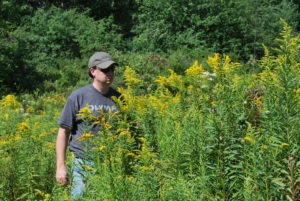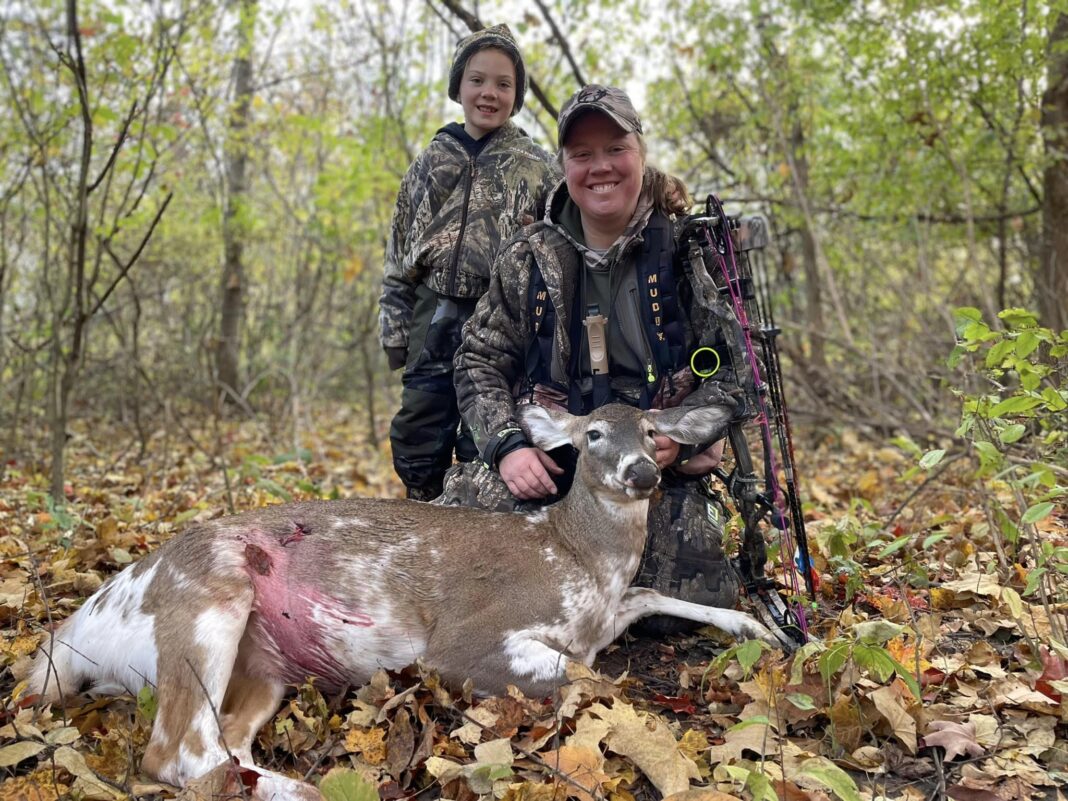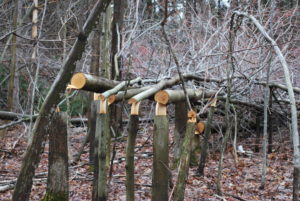It’s no secret that the key to great deer hunting is habitat. It’s also no secret that a so-so hunting property can be turned into an above average hunting property by improving the quality of the wildlife habitat on the property. Here are 10 habitat tips used by the pros.
- “Release” apples, pears, persimmons, and any other soft mast producing trees you may have on your property. Many properties already have soft mast producers in place. They are hidden in old hedgerows and in overgrown fields. “Releasing” them by removing competing trees and nearby brush will give them a new lease on life and increase production.
- “Foster” old fields and open spaces. Abandoned fields and clearings produce all kinds of wildlife food and cover. But sometimes they need a little help. If your old field is too old, it may be headed for the woodlot. Cutting back the heavy woody stuff with a saw or mower (after the nesting season) will keep old fields “young”.

This abandoned field will produce roughly 1,000 lbs of deer food per acre soil samples. - Let it go, let it grow. Allowing the back corner of a field or clearing to grow up into wildlife habitat is as simple as putting the cutting machine and plow away for a couple of years. Agricultural practices, while producing food (until harvest), strip properties of valuable wildlife cover.
- Plant food producers. Many deer hunting properties have never seen a plow disk or even a shovel. You can make a habitat difference by planting. You may need to plant spruce for winter cover. A half dozen apple or chestnut trees can be planted in a couple of hours. If you are deer country be sure to protect your plantings with deer-proof cages.
- Food plots rule. By far the most popular practice for habitat conscious deer hunters is planting wildlife food plots. Commercial plot mixes typically contain clovers, chicory, brassica and/or grains like winter wheat and oats. They all are used by deer, they provide outstanding nutrition, and they benefit wildlife.
- Fire up the chainsaw. Experts agree that a chainsaw is a deer’s best friend. Deer live in a world 6 feet and under, and what happens above that is relatively unimportant to a whitetail. Allowing sunlight to reach the forest floor stimulates regeneration, and provides food and cover for all types of wildlife.
- Improve your woodlands. Most woodlands will benefit from a little (or a lot) of thinning. Have a forester mark trees for “culling” and fire up the chainsaw. Healthy trees produce more and better timber and mast.
- Create structure in the woods. Woodland cutting allows hunters to pile tree limbs and tops to provide protective cover and food (temporarily) in the woods. Tangled piles of limbs protect tender young seedlings from browsing, encouraging regeneration and a new cycle of productive deer habitat.
- Create “browse” cuts. Heavy cutting stimulates regeneration. Clearcutting small (1/2 to 1 acre) patches in and around wooded areas will encourage rapid growth of food and cover. Deer love “browse cuts”.
- Create access. Hunting property access is important. A network of trails and access roads allows hunters to get in and out of the woods without excessive disturbance. Perimeter roads enhance security. Restricting human movement to established trails and roads away from these areas will minimize pressure and help keep deer from leaving your property.
So turn your property from a C- to a solid A the way the pros do.



















![The Best Deer Camp Chili [VIDEO] Deer Chili Ingredients, Tomatoes, Chili Spices](/wp-content/uploads/2015/10/Deer-Chili-Deer-Camp-Recipe-218x150.jpg)
![How to Call Elk Early in the Season [VIDEO]](/wp-content/uploads/2016/08/byers003-218x150.jpg)





![Idiots Disturb Hunter: How Would You Have Handled It? [VIDEO]](/wp-content/uploads/2015/10/DSC00110-e1474487693878-100x70.jpg)
![Albino Buck Shocked to Shed His Antlers [VIDEO]](/wp-content/uploads/2015/10/AlbinoDeer-100x70.jpg)